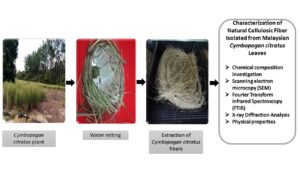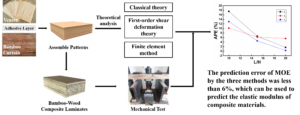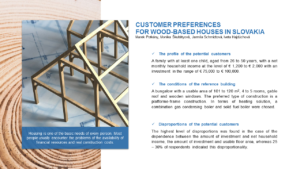Volume 16 Issue 4
Latest articles
- Researchpp 7729-7750Kamaruddin, Z. H., Jumaidin, R., Rushdan, A. I., Selamat, M. Z., and Hanim Alamjuri, R. (2021). "Characterization of natural cellulosic fiber isolated from Malaysian Cymbopogan citratus leaves," BioResources 16(4), 7729-7750.AbstractArticlePDF

A novel natural fiber derived from the Cymbopogan citratus plant was investigated for the first time. The characterization of the C. citratus fibers was conducted, and the chemical composition and physical, thermal, mechanical, crystallinity, and morphological characteristics were studied. The chemical composition analysis of Cymbopogan citratus fiber revealed that the suggested fiber was rich in cellulose contents (37.6%). The tensile test of C. citratus fiber demonstrated the fiber’s average tensile strength of 43.81 ± 15.27 MPa and modulus of elasticity of 1.046 ± 0.33 GPa. Further analysis with X-ray diffraction (XRD) confirmed that the crystallinity index of Cymbopogan citratus fiber was 35.2%, and the crystalline size was estimated as 4.28 nm. The Cymbopogan citratus fiber’s thermal stability was investigated via thermogravimetric analysis (TGA) and observed to be thermally stable (230 °C). A morphological investigation was employed on the fiber via a scanning electron microscope (SEM). The morphological study result exhibited that the fiber had a perforated and rough surface with the lumen in the center. Thus, the findings revealed that the Cymbopogan citratus fiber was a promising potential reinforcement for thermoplastic green composite applications.
- Researchpp 7751-7766Vititnev, A., Chistova, N., Alashkevich, Y., Matygulina, V., and Marchenko, R. (2021). "Optimization of wood fibre refining process in fibreboard production with new refiner disc working surface geometry," BioResources 16(4), 7751-7766.AbstractArticlePDF
Refining of fibrous semi-finished products is an important stage in fibreboard production because the efficiency of this stage affects the resulting fibres’ dimensional and qualitative characteristics. These, in turn, determine the physical and mechanical properties of the finished products, as well as the energy intensity of the process. The efficiency of this process depends on the raw materials used and the geometry of the refiner disc working surface and its operational modes. This article presents the results of the optimisation of wood fibre refining at a low concentration (2 to 4%), using fundamentally new refiner discs in high-density fibreboard production. Based on numerous theoretical and experimental studies, and on the results of processing, the problem of optimising the refining process was solved, taking into account the use of new refiner disc geometry. As a result, the optimal values of refiner process parameters and operation modes making it possible to prepare wood-fibre semi-finished products efficiently while reducing power consumption in refining were established. After optimising the refining process, the new geometry of refiner disc working surfaces provides optimal dimensional and qualitative characteristics of wood fibres, which results in finished products with high physical and mechanical properties in accordance with GOST 4598 (2018) without using bonding resins.
- Researchpp 7767-7783Tawfeek, M. E., Ali, H. M., Akrami, M., and Salem, M. Z. M. (2021). "Potential insecticidal activity of four essential oils against the rice weevil, Sitophilus oryzae (L.) (Coleoptera: Curculionidae)," BioResources 16(4), 7767-7783.AbstractArticlePDF
Oils extracted from Cymbopogon citratus, Lantana camara, Artemisia camphorata, and Imperata cylindrica plants were used as potential insecticides against the rice weevil, Sitophilus oryzae (L.) (Coleoptera: Curculionidae). The phytochemical composition of the isolated oils was identified by gas chromatograph-mass spectrometry (GC-MS). Oil contact toxicities were evaluated against the adults of S. oryzae. The activities of acetylcholinesterase (AChE), alkaline phosphatase (ALP), and transaminases enzymes (AST) were measured. L. camara oil (LC50 = 9.81 mg/cm2) demonstrated the highest effect, followed by C. citratus oil (LC50 = 10.89 mg/cm2), A. camphorata EO (LC50 = 16.12 mg/cm2), and I. cylindrica oil (LC50= 36.85 mg/cm2) against the adults of S. oryzae. The inhibition percentages of AChE were 38.8, 41.7, 35.0, and 27.2%; ALP were 42.4, 49.3, 28.1, and 18.7%; AST were 33.9, 38.7, 20.8, and 11.8%; and ALT were 22.7, 30.5, 14.6, and 9.6% after treated S. oryzae with oils from C. citratus, L. camara, A. camphorata and I. cylindrica, respectively. The highest abundant compounds in C. citratus were geranial (25.95%), nerylacetal (8.85%), and neral (8.45%), in L. camara were caryophyllene (12.2%), and 3-elemene (8.89%), in A. camphorata were germacrene D-4-ol (20.83%), and borneol (19.47%), and in I. cylindrica were 5-phenylundecane (10.68%), and 6-phenyldodecane (8.70%).
- Researchpp 7784-7798Chen, A., Liang, Y., Jiang, Z., and Sun, J. (2021). "Prediction of elastic modulus and mid-span deflection of bamboo-wood composite laminates," BioResources 16(4), 7784-7798.AbstractArticlePDF

To better guide the manufacturing of bamboo-wood composite laminates, classical theory, first-order shear theory, and finite element method were used to predict the elastic modulus and deflection of bamboo-wood composite laminates. The influence of the adhesive layer on the elastic modulus and deflection of composite materials was considered. The effect of transverse shear on the mechanical properties of materials became smaller and smaller with an increasing span-to-height ratio. The effects of the adhesive layer on the elastic modulus and deflection were ± 0.5% and -0.1% to 0.3%, respectively. The transverse elastic modulus and mid-span deflection predicted by the three methods were quite different from the experimental results. When the span-to-height ratio was equal to 20, the prediction error of longitudinal elastic modulus by the three methods was less than 6%, which can be used to predict the elastic modulus of composite materials. The results provide a novel method to predict the properties of bamboo-wood composite laminates.
- Researchpp 7799-7816Potkany, M., Škultétyová, M., Schmidtová, J., and Hajdúchová, I. (2021). "Customer preferences for wood-based houses in Slovakia," BioResources 16(4), 7799-7816.AbstractArticlePDF

Housing is one of the basic needs of every person. Most people usually encounter the problems of the availability of financial resources and real construction costs. The objective of this paper is to present customer preferences for the construction of family houses in Slovakia with the assessment of possible perception disproportions regarding economic characteristics in the context of interest and reality. A specific part of this paper includes the presentation of interest in the construction of wood-based houses. The questionnaire survey show that, in the target group (respondents aged 26 to 50 years), significant dependencies were found between the monitored traits and the amount of planned investment. For each dependence, possible disproportions were also revealed, which could lead to an overall threat of the plans for the construction of a family house. The disproportions, which were associated with 25 to 30% of respondents, depended on the amount of investment and net household income as well the outlay and usable floor area. This is an original survey in the field, the benefit of which should be its use for a comparison of similar research.
- Researchpp 7817-7829Ashrafi Birgani, S., Talaeipour, M., Hemmasi, A. H., Bazyar, B., and Larijani, K. (2021). "Production of nanocrystalline cellulose from bleached soda bagasse pulp," BioResources 16(4), 7817-7829.AbstractArticlePDF
The cellulose used in this study was prepared from bleached soda bagasse obtained from the Pars paper factory. To prepare nanocellulose, the sample was subjected to alkaline pretreatment and then acid hydrolysis using 54% sulfuric acid at several temperatures (35, 50, 60, and 65 °C) and different times (30, 60, 90, and 120 min). Then, they were prepared using a centrifuge, dialysis bag, ultrasound, and freezer, respectively. The produced nanocellulose was characterized by transmission electron microscopy (TEM), field-emission scanning electron microscopy (FE-SEM), Fourier transform infrared spectroscopy (FTIR), and X-ray diffraction (XRD). According to the results, temperatures of 50 and 90 °C were selected for the preparation of nanocellulose. The crystallization index of the hydrolyzed pulp and produced nanocellulose was 53 and 61%, respectively. The produced nanocellulose had a fibrillar shape.
- Researchpp 7830-7845Trenčiansky, M., Štěrbová, M., Výbošťok, J., and Lieskovský, M. (2021). "Impacts of forest cover on surface runoff quality in small catchments," BioResources 16(4), 7830-7845.AbstractArticlePDF
Forest cover influences not only the amount of surface runoff, but also its quality. The concentrations of chemicals in surface runoff differ between forest catchments and non-forest catchments (agricultural areas). The authors investigated the chemical compositions of surface runoff in two small neighboring catchments (forest, non-forest), by analyzing and summarizing data over a period of 26 years from 1986 to 2012. During this period, the stock and absorption area of forest stands increased, air quality improved, the agricultural landscape was partly regenerated, and global climate change became apparent. The authors observed differences in surface runoff between forest- and non-forest catchments. However, these differences were not mainly caused by the influence of the forest cover, but by changes in agricultural land management. Since 2006, agricultural land has been managed without the use of artificial fertilizers, which reduced the contents of pollutants in surface runoff from the non-forest catchment. The existence of the forest as such excludes or noticeably eliminates the use of fertilizers and chemical substances that affect water quality.
- Researchpp 7846-7854Baraúna, E. E. P., Stallbaun, P. H., Monteiro, T. C., Silva, T. C., Baldin, T., Colen, F., and Arantes, M. D. C. (2021). "The effect of carbonization on the wood anatomy of Sclerolobium paniculatum Vogel," BioResources 16(4), 7846-7854.AbstractArticlePDF
Considering the extraordinary diversity of the Brazilian Cerrado and the difficulties related to the inspection of environmental crimes, knowing the wood and charcoal anatomy of widely exploited species is important. Thus, this study aimed to verify the anatomical characteristics of the wood and charcoal of Sclerolobium paniculatum. Therefore, anatomical characterizations of the wood and the charcoal produced were performed in order to compare the characteristics of both materials and observe any possible changes in the anatomical properties after carbonization. The results exposed that the qualitative anatomical characteristics of S. paniculatum wood can be maintained after the carbonization process. However, quantitatively, the carbonization increased the vessel frequency value and height and width of rays, despite reducing the frequency of rays. The diameter of the vessels was not altered by carbonization. This characterization of the species can then serve as a database for future identification of charcoal produced with this wood. In addition, it can encourage increasing the quality of inspection and consequently reducing the illegal exploitation of the species in natural environments.
- Researchpp 7855-7869Mardani, B., Jahan Latibari, A., and Tajdini, A. (2021). "Presenting a risk management model for residential wooden structures in earthquake-prone areas of Iran," BioResources 16(4), 7855-7869.AbstractArticlePDF
A risk management model was applied to residential wooden structures in earthquake-prone areas of Iran. The statistical population of the study consisted of academic and organizational experts. Thirty individuals were interviewed using a purposive non-random sampling technique and the data adequacy and saturation principle. A semi-structured interview was used to collect the required data. The validity was assessed using content and construct validity. Cronbach’s alpha coefficient was used to measure reliability, and it was greater than 0.7 for all components. In the qualitative section, data analysis was performed via a theoretical coding method that used the Grounded Theory approach, and the model was presented using interpretive structural modeling. The results revealed that the dimensions of the seismic related risks in the implementation of wooden residential structures in earthquake-prone areas of Iran, which included the internal risks (employer risk, implementation risk, scheduling risk, manpower risk, and design risk) and the external risk (risk due to political, economic, legal, and natural factors), were the most important risks.
- Researchpp 7870-7883Witorożec-Piechnik, A., Matyka, M., Wolszczak, P., and Oleszek, M. (2021). "Yield and selected physiological parameters of maize, sorghum, and triticale depending on fertilization system," BioResources 16(4), 7870-7883.AbstractArticlePDF
Effects of fertilization with digestate from agricultural biogas plant and its influence on growth and selected physiological parameters of maize, triticale, and sorghum plants cultivated for biogas production were studied in this work. The digestate was used as an organic fertilizer, being a substitute or supplement to mineral fertilization. The fertilization with the digestate had a positive effect on the fresh matter yield (FMY) of sorghum (85.4 Mg ha-1), the dry matter content (DM) of maize (41.9%) and sorghum (23.6%), as well as on the dry matter yield (DMY) of triticale (12.2 Mg ha-1) and sorghum (19.8 Mg ha-1). Among the studied species, the maize fertilized with digestate (variants N2 and N3) showed better growth responses compared to the maize that was fertilized with mineral fertilizers (plant nutrition status – SPAD of 54.8). No significant influence of fertilization variant was observed on the photosynthetic active radiation (PAR) and the leaf area index (LAI) of the tested plant species. The digestate proved to be a good fertilizer, supporting high yields without adverse effects on the physiological parameters of the plants.
